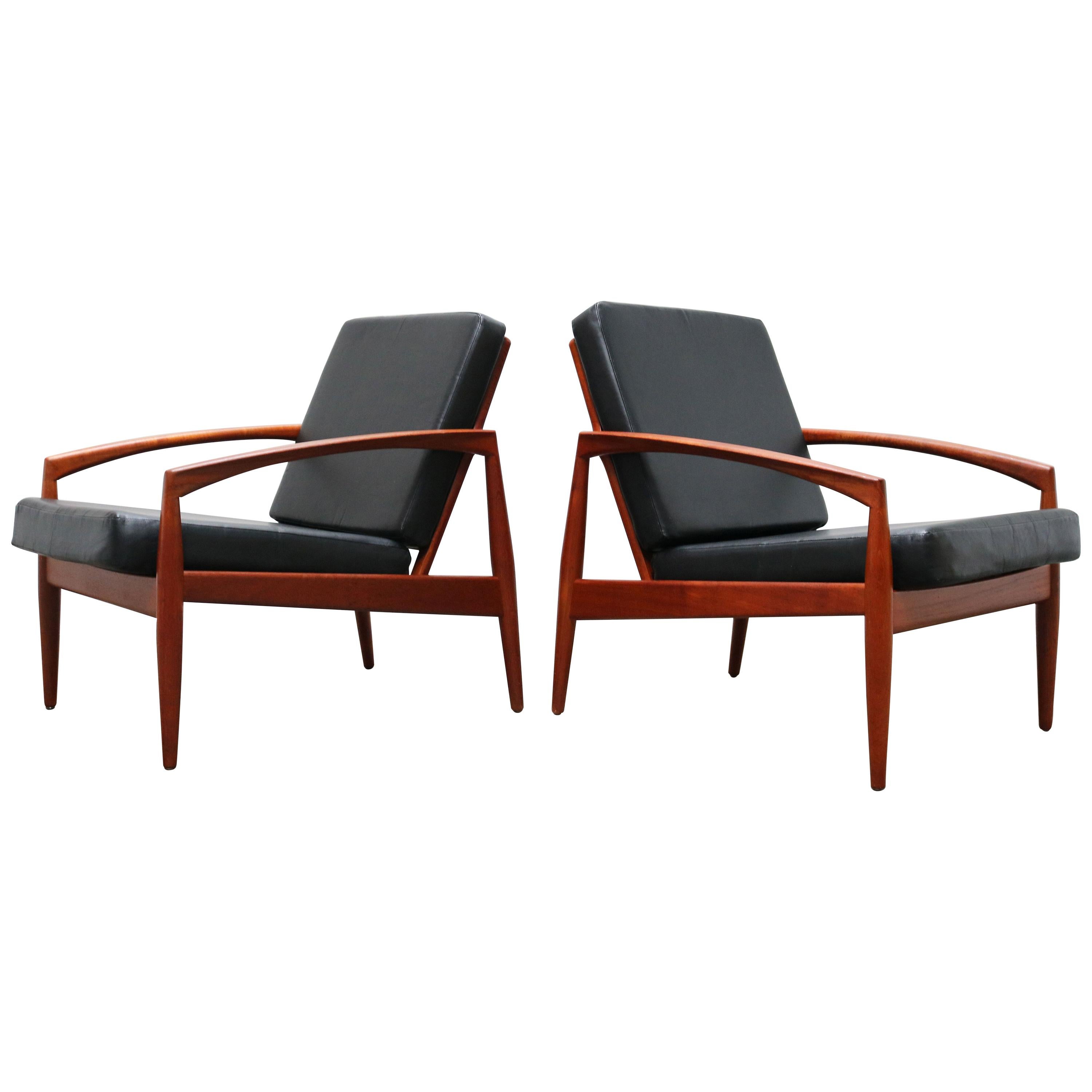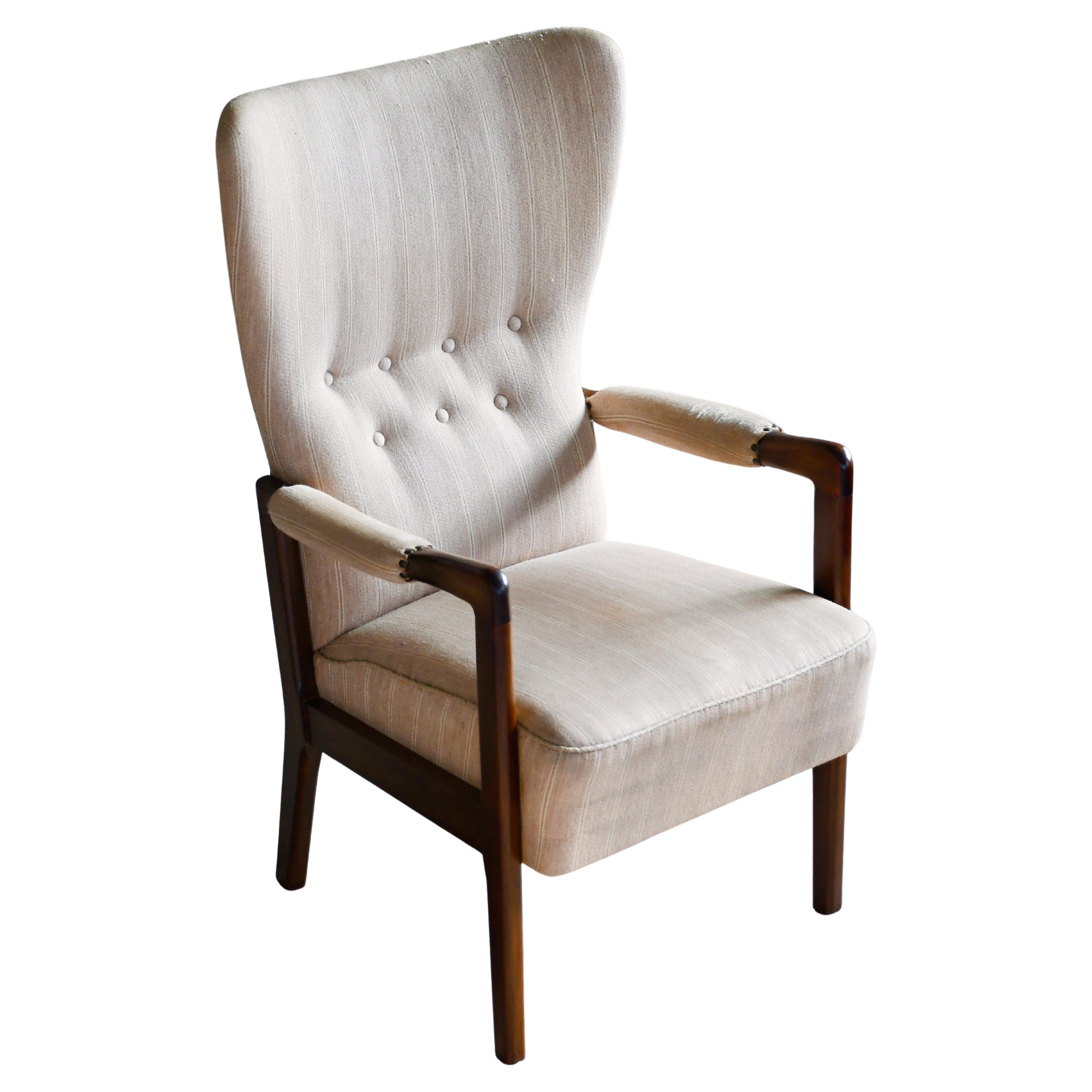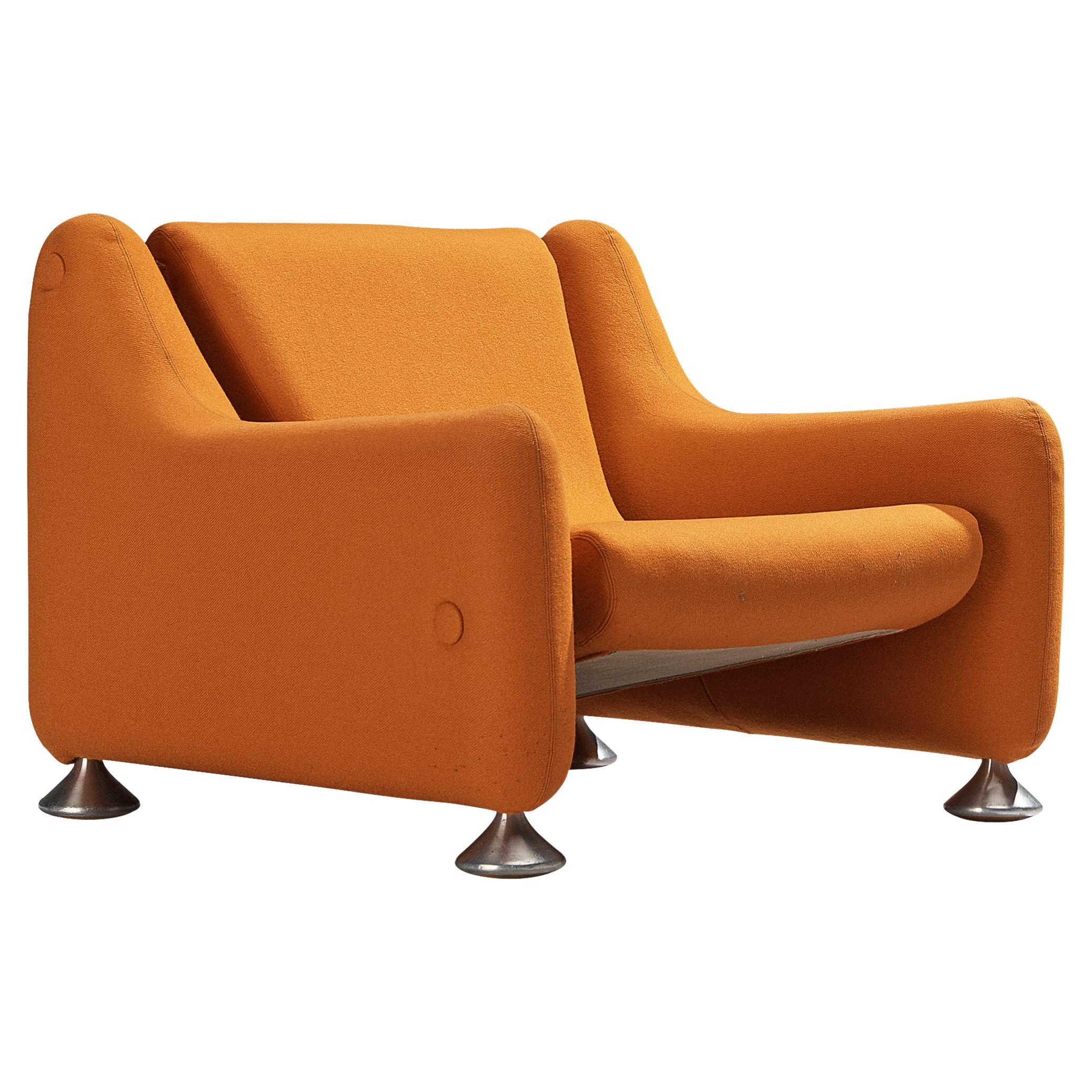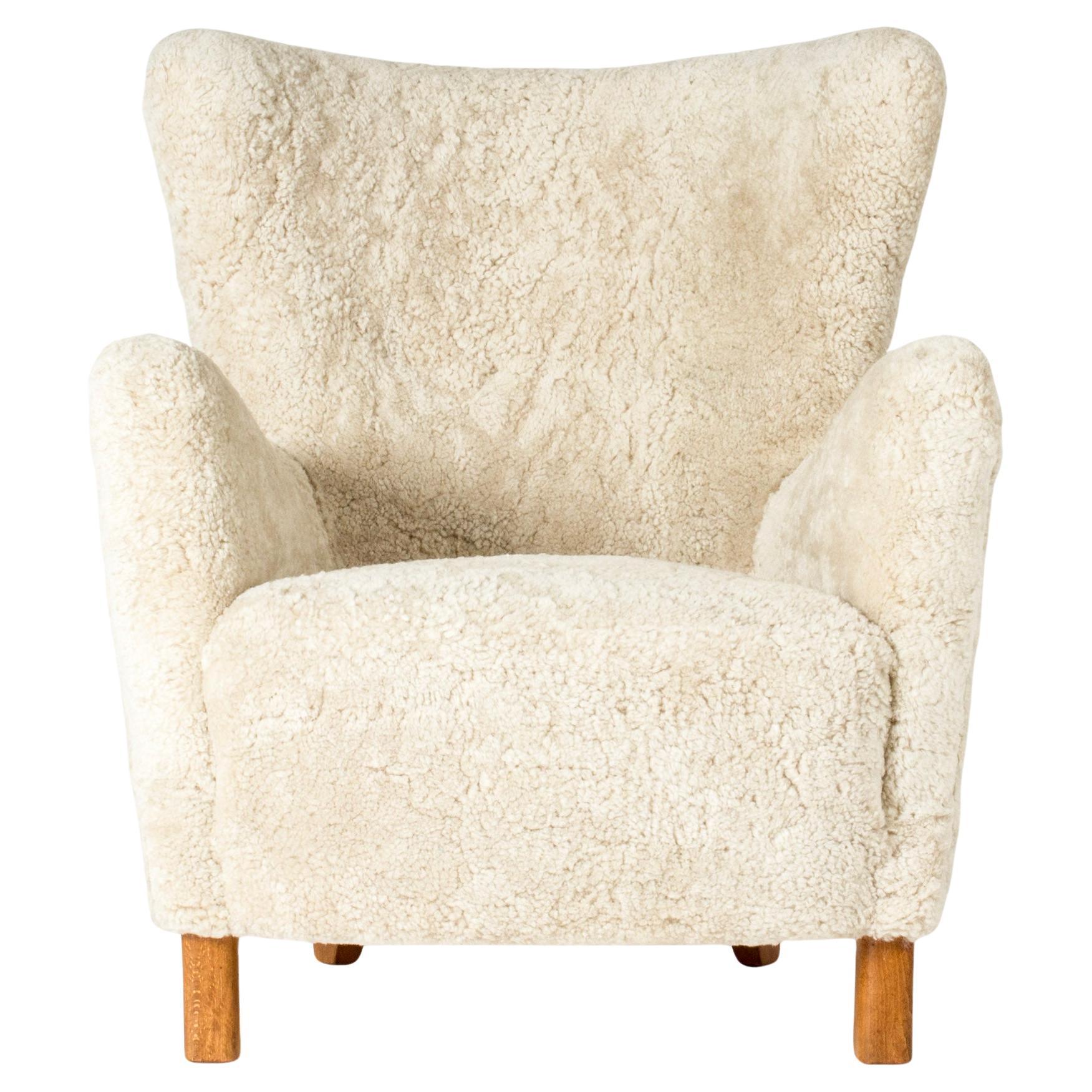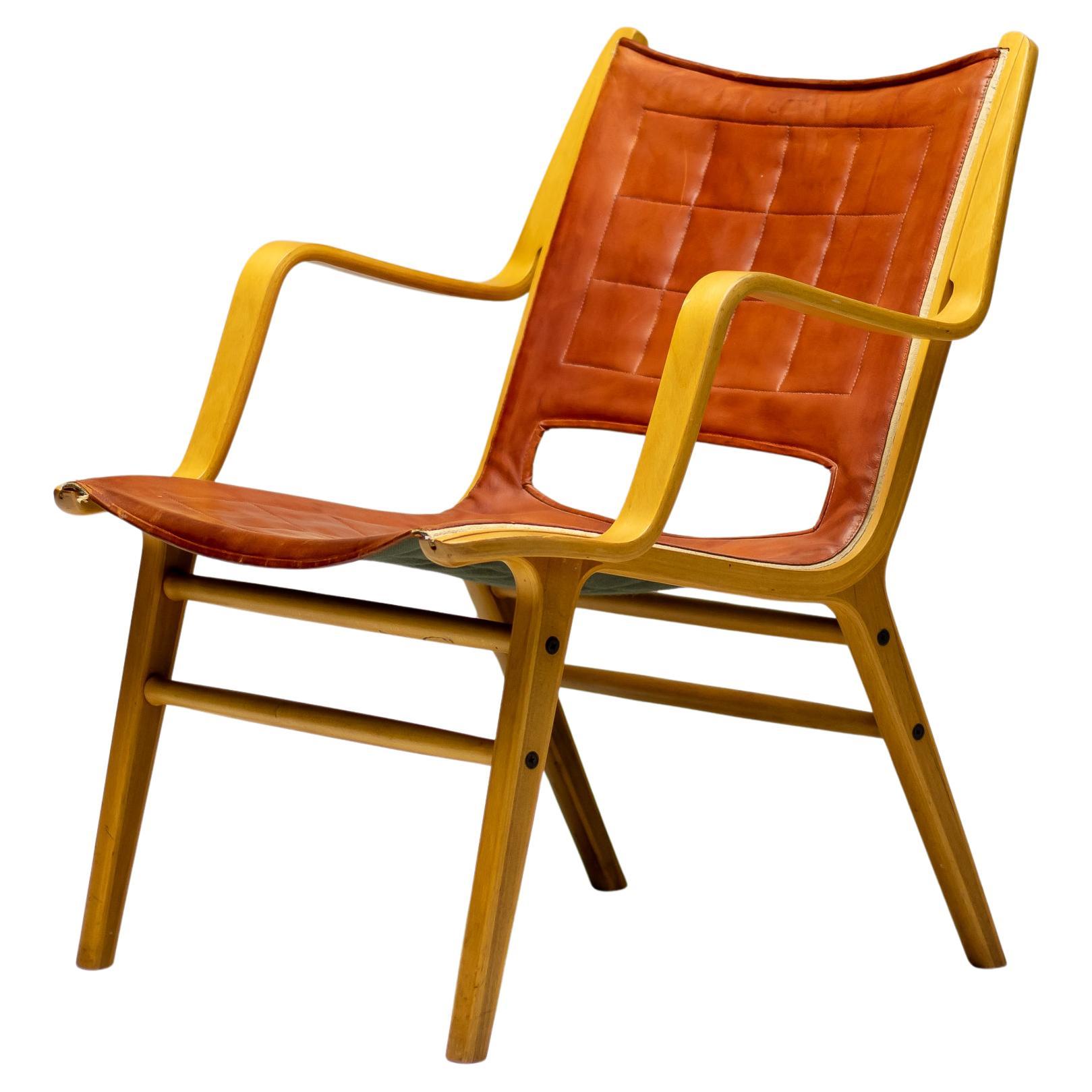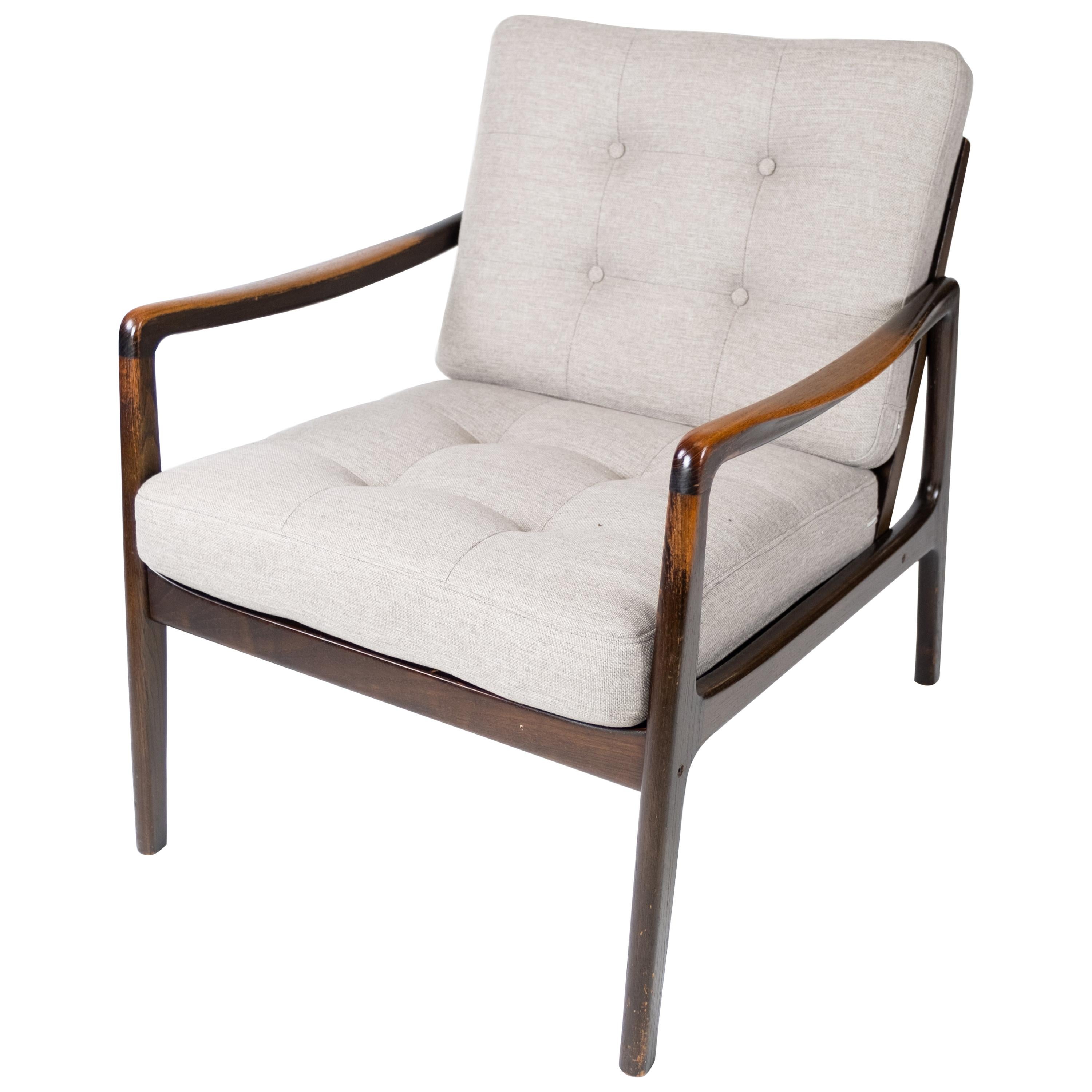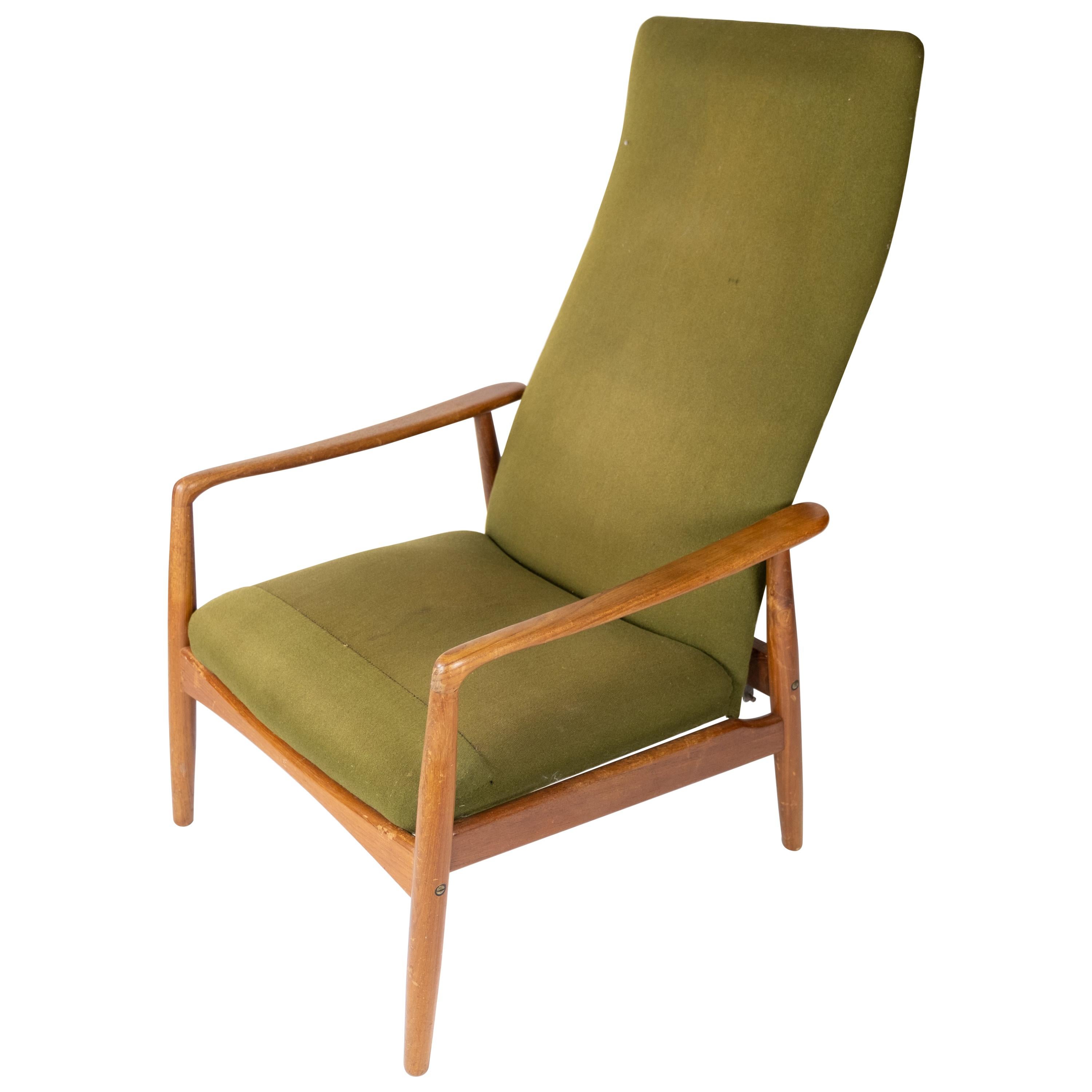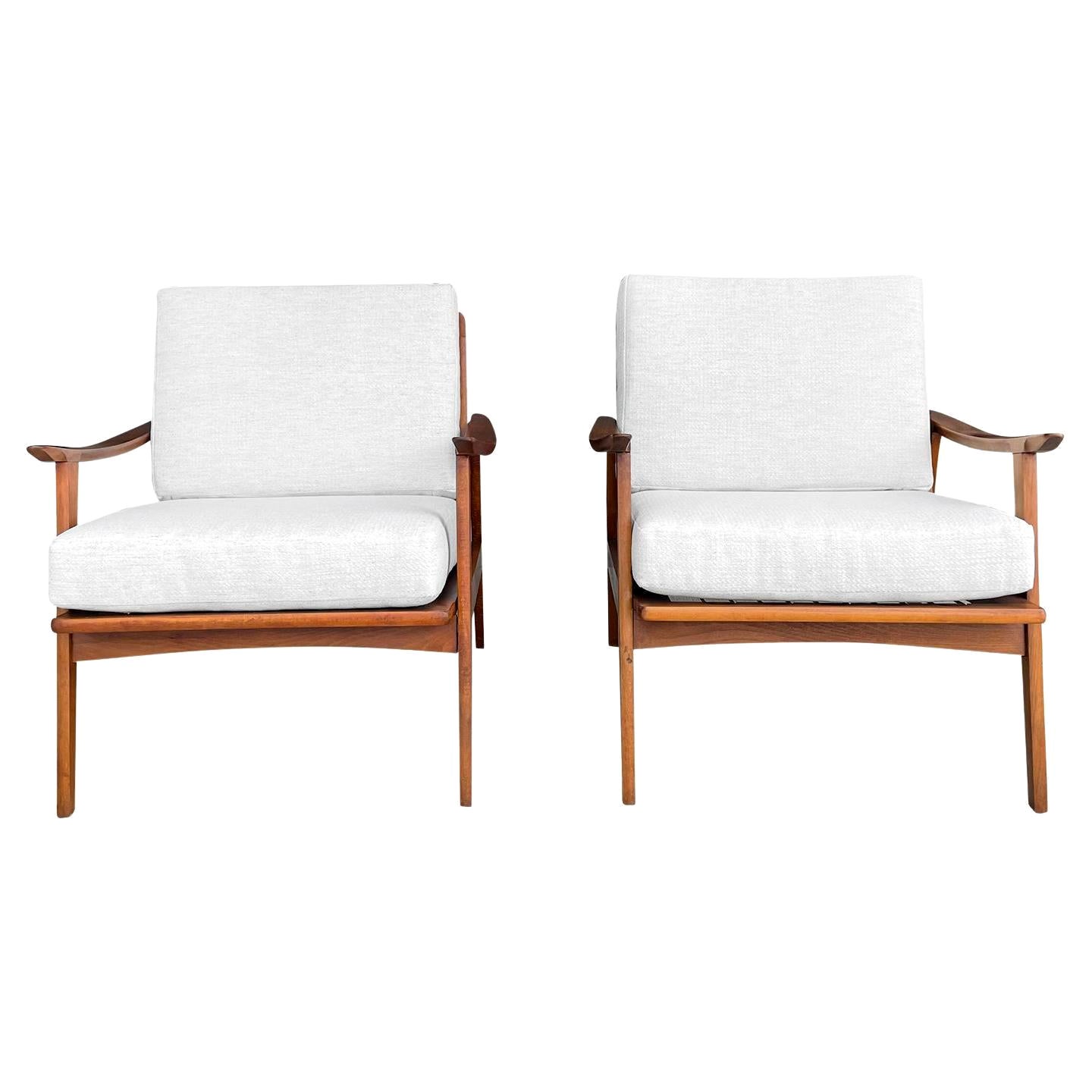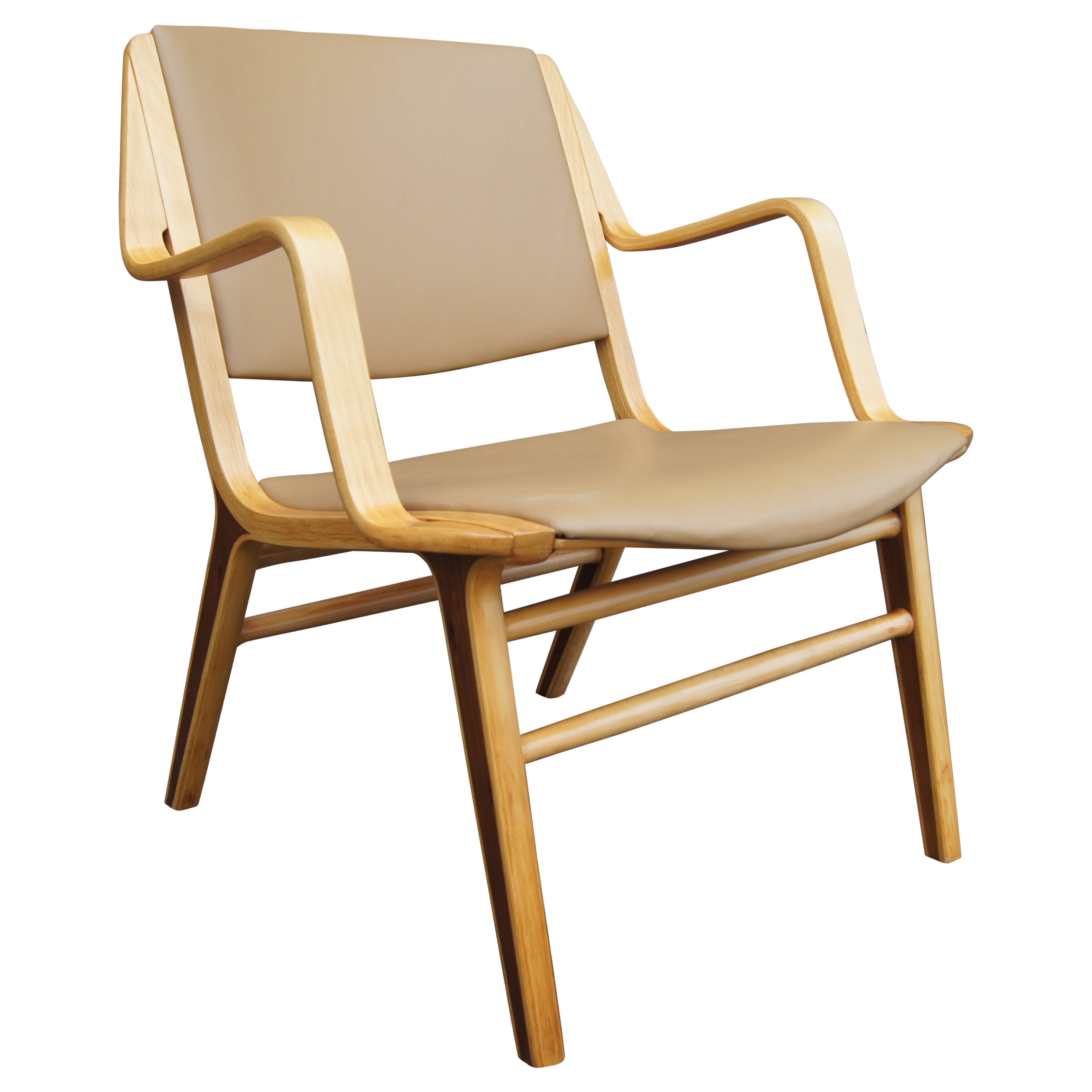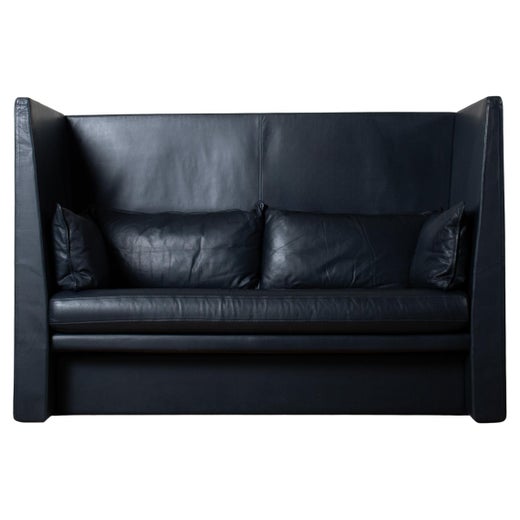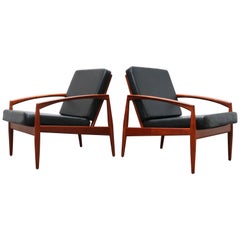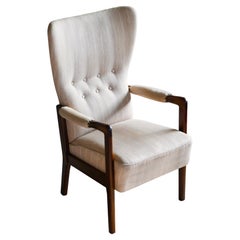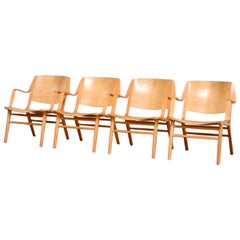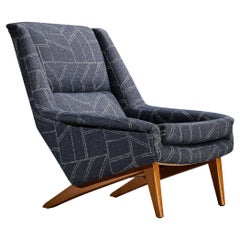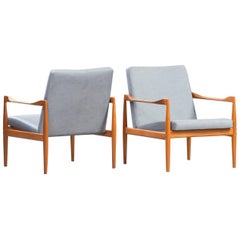
Kai Kristiansen Midcentury Teak Lounge Chairs for Fritz Hansen, Set of Two
View Similar Items
Kai Kristiansen Midcentury Teak Lounge Chairs for Fritz Hansen, Set of Two
About the Item
- Creator:Kai Kristiansen (Designer),Fritz Hansen (Manufacturer)
- Dimensions:Height: 29.53 in (75 cm)Width: 26.38 in (67 cm)Depth: 29.53 in (75 cm)
- Sold As:Set of 2
- Style:Scandinavian Modern (Of the Period)
- Materials and Techniques:
- Place of Origin:
- Period:
- Date of Manufacture:1960s
- Condition:Refinished. Reupholstered. Fully restored piece, hand-made varnished by our own team of craftsmen. New fabric upholstery.
- Seller Location:Porto, PT
- Reference Number:1stDibs: LU1038811555333
Kai Kristiansen
With a passion for math and engineering, Kai Kristiansen has created high-quality wood furniture for decades. Beginning in the 1950s, his coffee tables, chairs, modular shelving and other furnishings were made in the style that would become internationally renowned as Danish modern and boasted clean lines, perfected functionality and exacting craftsmanship.
Born in Denmark, Kristiansen trained in cabinetmaking before studying with Kaare Klint, often cited as the “father of modern Danish design,” at the Royal Danish Academy of Fine Arts in Copenhagen. At just 26 years old, Kristiansen opened his own studio.
Kristiansen had his mid-century breakthrough in 1956 with the Chair #42, which he made with Schou Andersen. Unlike most other chairs at the time, Chair #42’s armrests, with their wealth of radical angles, were connected to the back rather than the front legs. This unconventional flourish makes the backrest appear as though it is floating in midair above the seat.
Kristiansen’s next innovation was a modular wall system in 1957 — three years ahead of Dieter Rams’s more famous 606 Universal Shelving System. Called the Reolsystem Wall Unit, produced by SB Feldballes Møbelfabrik, it’s also known as the FM Wall Unit as FM/Fornem Møbelkunst began producing it in the 1960s.
Kristiansen would go on to work with other leading Danish furniture manufacturers such as Magnus Olesen, Fritz Hansen and Vildbjerg Møbelfabrik, designing everything from chairs and desks to sideboards and cabinets, frequently in rosewood and teak. (The latter was a sought-after wood by Scandinavian modern designers.)
While many of Kristiansen’s timeless designs remain in production, such as his Paper Knife sofa, which was reintroduced by Miyazaki Chair Factory in 2008, and his 1950s Entré collection, which was relaunched with Great Dane Furniture in 2016, others are prized as vintage mid-century pieces.
Today, Kristiansen is still at work on new furniture with an expert eye to thoughtfully functional designs that are made to last.
Find a collection of vintage Kai Kristiansen furniture on 1stDibs.
Fritz Hansen
When the Copenhagen-based furniture maker Fritz Hansen opened for business more than 140 years ago, the company — which today styles itself The Republic of Fritz Hansen — adhered to the traditional, time-honored Danish values of craftsmanship in woodworking and joinery. Yet thanks to the postwar innovations of Arne Jacobsen and others, Fritz Hansen would become the country’s leader in Scandinavian modern design using new, forward-looking materials and methods.
Fritz Hansen started his company in 1872, specializing in the manufacture of small furniture parts. In 1915, the firm became the first in Denmark to make chairs using steam-bent wood (a technique most familiar from birch used in the ubiquitous café chairs by Austrian maker Thonet). At the time, Fritz Hansen was best known for seating that featured curved legs and curlicue splats and referenced 18th-century Chippendale designs.
In the next few decades, the company promoted simple, plain chairs with slatted backs and cane or rush seats designed by such proto-modernist masters as Kaare Klint and Søren Hansen. Still, the most aesthetically striking piece Fritz Hansen produced in the first half of the 20th century was arguably the China chair of 1944 by Hans Wegner — and that piece, with its yoke-shaped bentwood back- and armrest, was based on seating manufactured in China during the Ming dynasty. (Wegner was moved by portraits he’d seen of Danish merchants in the Chinese chairs.)
Everything changed in 1952 with Arne Jacobsen’s Ant chair. The collaboration between the architect and Fritz Hansen officially originated in 1934 — that year, Jacobsen created his inaugural piece for the manufacturer, the solid beechwood Bellevue chair for a restaurant commission. The Ant chair, however, was the breakthrough.
With assistance from his then-apprentice Verner Panton, Jacobsen designed the Ant chair for the cafeteria of a Danish healthcare company called Novo Nordisk. The chair was composed of a seat and backrest formed from a single piece of molded plywood attached, in its original iteration, to three tubular metal legs. Its silhouette suggests the shape of the insect’s body, and the lightweight, stackable chair and its biomorphic form became an international hit.
Jacobsen followed with more plywood successes, such as the Grand Prix chair of 1957. The following year he designed the SAS Royal Hotel in Copenhagen and its furnishings, including the Egg chair and the Swan chair. Those two upholstered pieces, with their lush, organic frames made of fiberglass-reinforced polyurethane, have become the two chairs most emblematic of mid-20th-century cool. Moreover, the Egg and Swan led Fritz Hansen to fully embrace new man-made materials, like foam, plastic and steel wire used to realize the avant-garde creations of later generations of designers with whom the firm collaborated, such as Piet Hein, Jørn Utzon (the architect of the Sydney Opera House) and Verner Panton. If the Fritz Hansen of 1872 would not now recognize his company, today’s connoisseurs certainly do.
Find a collection of vintage Fritz Hansen tables, lounge chairs, sofas and other furniture on 1stDibs.
You May Also Like
Vintage 1950s Danish Mid-Century Modern Lounge Chairs
Faux Leather, Teak
Vintage 1940s Danish Mid-Century Modern Lounge Chairs
Wool, Beech
Mid-20th Century Danish Scandinavian Modern Lounge Chairs
Beech, Oak
Vintage 1950s Danish Mid-Century Modern Lounge Chairs
Fabric, Teak
Vintage 1970s Danish Post-Modern Lounge Chairs
Metal, Steel, Chrome
Vintage 1930s Danish Scandinavian Modern Lounge Chairs
Sheepskin, Wood
